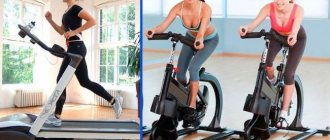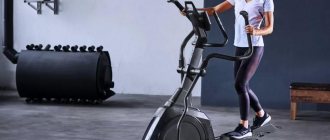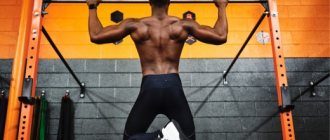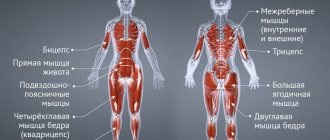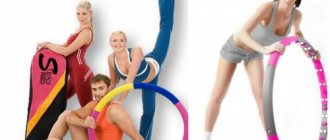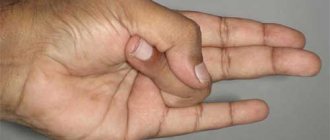Features of training on a treadmill
- One of the advantages of working out on a treadmill is the shock absorption system , which softens impacts that negatively affect the joints and spine. Accordingly, running on a track is much more comfortable and safer than running on asphalt.
- The treadmill is fully adapted for a comfortable workout for the user , including location (conditions), the presence of heart rate monitors for constant heart rate monitoring, special weight loss programs that take into account the user’s personal parameters, such as gender, weight, age, to determine the individual appropriate load.
Read more about how to choose the right treadmill →
You gain a good sense of balance
Walking on a treadmill is an excellent coordination exercise. “When you walk and run, you only have one foot on the ground most of the time,” says Joey Thurman. “Regular treadmill training improves your balance.” The lesson can be made even more effective. “To do this, you should alternate between forward and backward walking on the machine,” advises John Fox, personal trainer . “The latter will not only improve your sense of balance, but also your memory.”
How to properly run on a treadmill
First of all, it is necessary to follow safety requirements; this will not only prevent injuries, but will also extend the life of the simulator itself.
- Before turning on the track, you need to place your feet on the sides on special sides, and then start the belt using the “start” button. When the belt begins to move, without increasing speed, place your feet on the track one at a time, only then slowly increase your walking speed.
- Start your workout with brisk walking , this is necessary to warm up the muscles and ligaments, as well as to gradually increase your heart rate and, accordingly, safe and proper heart function.
- Do not exceed the speed limit if you are at the maximum permissible heart rate limit. If, having previously set a fat burning program, or simply monitoring your own heart rate zones using cardio sensors, your heart rate is too high, do not reduce the speed sharply. Reduce your speed by 2-3 km/h and level out your heart rate, reaching the desired weight loss zone.
- Never stop abruptly. To complete the run, gradually reduce your speed to a walk over 2-3 minutes. After the heart rate has decreased and the step has become slow (at minimum speed), press the “Stop” button, only after the belt has completely stopped, leave the path.
In combination with which workouts is the treadmill effective?
Regular running, as mentioned above, allows you to strengthen the body and prepare the athlete for higher, power loads. To pump up the gluteal or calf muscles, you need to do strength training. The treadmill can be a good warm-up that will speed up your metabolism before starting the main part of your workout.
After the athlete spends 20 to 50 minutes on the treadmill (the exact duration of the warm-up should be determined individually, preferably with a trainer), you can proceed to the following exercises:
- Gluteal bridge. Performed in 3 approaches, the number of repetitions is from 20 to 40 times. Depending on the athlete’s advancement, the exercise can become more complicated: instead of two supporting legs, one is used, and weights are applied in the form of a plate from a barbell on the body.
- Squats with a barbell or dumbbells. It is necessary to perform 3 sets of 10 repetitions. Beginners can use an empty bar.
- Forward lunges with dumbbells. Performed with alternating legs. It is advisable to perform 3 sets of 10 repetitions. The weight of the burden is determined individually.
The greatest effect is achieved when using weights, but this element is optional. For example, the gluteal bridge is in most cases performed without additional equipment. It is also effective to use a Smith machine for the gluteal muscles.
The benefits of running on a treadmill
- Strengthens the cardiovascular system, improves blood circulation, normalizes blood pressure.
- Prevents the development of muscle atony, strengthens the muscles of the whole body.
- Improves respiratory function.
- Promotes safe weight loss due to the high energy costs of running.
- The shock absorption system makes training safe, maintaining joint mobility and spinal health.
- The ability to track your heart rate using cardiac sensors makes training safe, preventing you from overloading your heart muscle or increasing your blood pressure.
What muscle groups does the treadmill train?
Leg muscles
When running, the leg muscles are most involved. Namely: the muscles of the buttocks, they support the torso when bending in the pelvic area, the muscles of the thighs, in particular the quadriceps when flexing and extending the legs, and the biceps muscles when rotating the lower leg.
The calf muscles work to maintain balance while running. The tibialis anterior and posterior, as well as the calf muscles, are involved in the rotation of the foot.
Back muscles
The latissimus muscles are also used when running. They work when the athlete moves his arms back. The load on them increases with the intensity of running.
When jogging, these muscles hardly work.
Press
The abdominal muscles hold the upper body in the correct position when running.
These muscles are little used during light exercise. Just like the back muscles, the load on them can be noticeable during intense training.
Muscles of the shoulder girdle
When running, the biceps and triceps muscles of the shoulder girdle help keep your arms in the correct position.
This position of the hands helps the athlete to run a little, especially uphill. Like all other muscles, the biceps and triceps are most stressed when running uphill or during interval training.
Muscles of the cardiovascular system
While running, the cardiovascular muscle works very hard to pump blood throughout the body. Therefore, jogging is considered effective and useful for keeping the heart muscles in good shape.
Over several months of regular training - 3-4 days a week, blood circulation throughout the body improves. The walls of the heart become thicker. The number of capillaries increases.
Thanks to increased blood movement, waste and toxins are removed from the body, oxygen is better supplied to the organs, which ultimately increases immunity and the body's resistance to various diseases.
By finding out which muscles work on the treadmill, you can change your workouts and adjust them to your goals. And by making your workouts more difficult, you can achieve greater results. But the main thing is that any regular exercise on the treadmill will help you stay fit and in a good mood.
How to run on a treadmill for weight loss
The treadmill can make your workout easier by automatically detecting the exerciser's heart rate zone. When setting personal parameters, the program calculates 60-70% of the maximum heart rate. If the track functions do not provide this, calculate the heart rate zone yourself:
- (220 – age) * 0.6
- (220 – age) * 0.7
Once you have two values, train without going beyond your individual zone. Plus, this will be the best heart rate for burning fat on the treadmill without putting extra strain on your heart.
Depending on your age, weight, and fitness level, even walking on a treadmill may help you lose weight if your heart rate is in the right range.
Interval training on a treadmill is also suitable for fat burning - alternating equal intervals of running and walking. Controlling your heart rate for fat burning will also remain an important condition Even if the entire workout will take place uphill (at an incline), here too it is important to ensure that the heart rate does not fall below the minimum value or exceed the maximum. And another article has a lot of interesting information about walking uphill on a treadmill.
Do workouts every other day , do not exceed four sessions per week. The duration of the training depends on the chosen program.
- If you plan to do interval training or running at one speed, 30-40 minutes is enough, after which you need to calm your heart rate while walking and stretch.
- And if you want to walk uphill, taking into account your individual heart rate zone, the workout can last 50-60 minutes.
Buy a treadmill and get an individual training program
ZonaSporta offers customers high-quality exercise equipment of various types, as well as a wide range of other sports equipment for adults and children. In addition, we, as specialists, know very well that it is not enough to decide what is best for you: a treadmill or an exercise bike (/articles/begovye-dorozhki/chto-luchshe-begovaya-dorozhka-ili-velotrenazher), and buy the equipment you like. You also need to practice on them, moreover, do it correctly.
To simplify the transformation of our clients, our company offers them the services of a professional trainer. If you buy a simulator from us, a consultation with this specialist will cost you absolutely free. You can ask him about which muscles work when walking on a treadmill and which exercises are best to perform. You will also be able to learn a lot about your capabilities.
If you are interested in issues related to delivery/purchase/installation, it is better to contact a consultant. He will provide you with information on any of the above topics, and will also help you buy a treadmill remotely in Kirov, Moscow, St. Petersburg and other cities. Therefore, if you have any questions, call.
Treadmill training program
Option #1
Warm-up: walk for 5 minutes at a speed of 5 km/h.
- running at a speed of 10 km/h for 3 minutes;
- walking 5 km/h 2 minutes.
Perform a set of 6 approaches (30 minutes), alternating running and walking. At the end of the complex, slow down and walk to lower your heart rate to normal. Stretch for 5 minutes.
Option No. 2
Warm up – walking for 5 minutes at 5-6 km/h.
- 3 minutes of walking at a speed of 6 km/h at an incline – an angle of 10%;
- 2 minutes of running at a speed of 10 km/h (no incline).
Repeat the complex 6 times, to cool down, walk at a speed of 5 km/h for five minutes. Finally, do some stretching.
Option No. 3 (advanced level)
Warm-up: walk for 5 minutes at a speed of 5 km/h.
- 3 minutes walk at a speed of 6-7 km/h;
- 4 minutes acceleration to 13 km/h;
- 3 minutes walk at a speed of 6-7 km/h;
- 4 minutes acceleration to 14 km/h;
- 3 minutes walk at a speed of 6-7 km/h;
- 4 minutes acceleration to 15 km/h;
- 3 minutes walk at a speed of 6-7 km/h;
- 4 minutes acceleration to 14 km/h;
- 5 minutes walk 6 km/h with a gradual decrease in speed.
Do stretches for all muscles.
You work your leg muscles well
Walking on a treadmill forces certain muscle groups to work. “The work includes the muscles of the feet, buttocks, hamstrings, quadriceps, and if you actively move your arms, the muscles of the upper body,” says John Fox. — For a long, relaxed workout on the treadmill, set the incline to a moderate incline of 2 to 3%. During fast walking, the angle can be increased - this will speed up the metabolism and make the muscles work even more actively.”
Why do you need cardio training?
Cardio training is used primarily to strengthen the cardiovascular system, for weight loss, and to keep the body in good shape. With loads of this type, the speed of blood circulation increases, as a result, the heart muscle is trained, the blood vessels become more elastic, and the development of vegetative-vascular dystonia and respiratory dysfunction are prevented.
With regular cardio training, over time, the body “rebuilds” and begins to accumulate excess carbohydrates in muscles rather than in fat cells. Therefore, the process of losing weight does not happen quickly, but the result is a strong, toned body.
